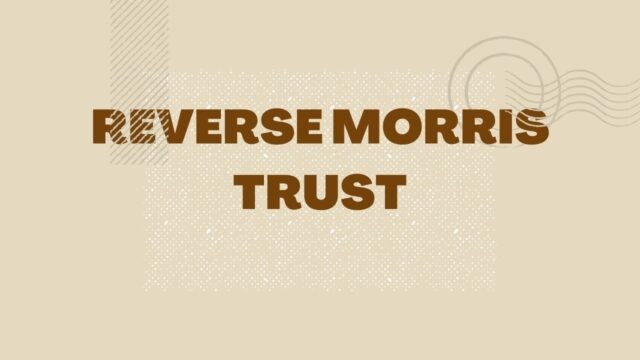
A Reverse Morris Trust is a type of United States law transaction that combines acquisitive and divisive reorganization. Among its benefits, this form of restructuring enables a business to transfer a subsidiary to another entity tax-free. To learn more, keep reading. In this article, you will learn about this, its advantages, and how it can work for your business. We also examine the Tax implications of a Reverse Morris Trust.
Tax-free spin-off Reverse Morris Trust
A reverse Morris trust is a tax-free spin-off that involves the transfer of shares from one company to another in a prearranged merger. For example, if AT&T were to spin off WarnerMedia, which owns CNN, HBO, and TBS, and merge it with Discovery, it would retain more than 50% of the combined company and therefore be tax-free. However, this tax-free spin-off is not without its flaws.
The deals are extremely rare, though they can happen. One notable example was Hewlett Packard Enterprise’s deal with Computer Sciences Corp. Another example was Lockheed Martin Corp.’s deal with Leidos Holdings Inc. Tax professionals had anticipated a spike in these types of transactions following the tax overhaul of 2017.
Tax-efficient spin-off
Oftentimes, companies seek to implement a tax-efficient spin-off of their reverse Morris trust entities. In such a case, the ParentCo wishes to spin off its subsidiary with a low tax basis. This subsidiary might have been organically grown or acquired in a stock acquisition. In such a case, the Morris trust transaction provides the perfect opportunity to sell the subsidiary to a strategic buyer. The distributing corporation will receive a minority equity stake in the combined company, and the tax-efficient spin-off of the subsidiary provides the opportunity for the strategic buyer to acquire the spun business.
However, such an acquisition can be problematic for a number of reasons. Typically, the merger-partner would need to own 50% or more of the combined company. This could result in a conflict of interest in terms of ownership. Furthermore, the IRS has strict rules about the use of this strategy. It may be worth examining whether you can successfully use this technique for your specific situation. If it is, you might be able to maximize the value of your trust and receive a handsome tax break at the same time.
Test for a reverse morris trust structure
There is a salient characteristic of it’s transaction. The acquiring entity must be smaller than the operations being spun off. Controlling ownership of the new entity must be more than 50% of the shares of the acquiring company. This requirement is necessary to avoid transferring overvalued assets. A Reverse Morris trust structure also prevents the transfer of assets that could not be sold at book value to the buyer.
In the case of FairPoint, it is the appropriate choice for a spin-off of FairPoint. This transaction will result in tax-free distributions of FairPoint shares to Verizon shareholders, as well as a one-time dividend that Verizon receives from the spin-off. The proposed transaction will create a separate holding company for Verizon’s business activities, spin off Verizon stock to its shareholders, merge with FairPoint, and ensure that the distribution of equity will be tax-free.
Tax implications of a reverse morris trust structure
The Reverse Morris trust structure allows for a company to restructure its debt while generating significant cash flow without having to pay the federal income tax. For example, if AT&T were to merge with Discovery, it would receive $43 billion in cash and debt securities. WarnerMedia would keep its existing debts and use the significant cash flow from the merger to repay its debts. The Reverse Morris trust structure may be the perfect solution for these types of companies.
Reverse Morris Trust deals combine the advantages of spin-offs and mergers. The purpose of the spin-off is often to shed an unprofitable business and facilitate the acquisition of another, more profitable company. However, this type of structure can be problematic in some cases, and it is important to obtain tax advice before implementing it. Here are some examples. To start, one company may choose to spin off its enterprise services division with a large company such as CSC.


































